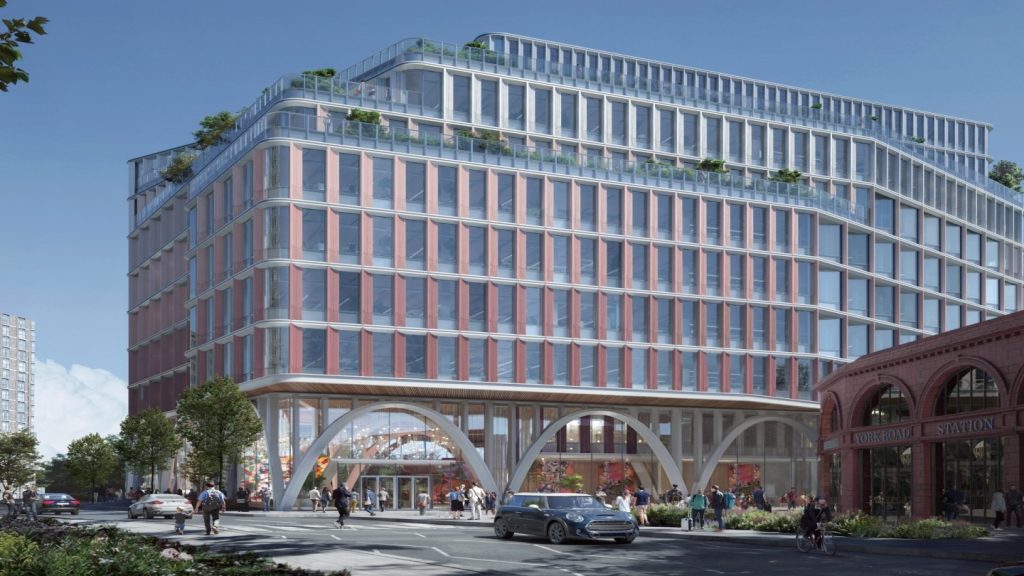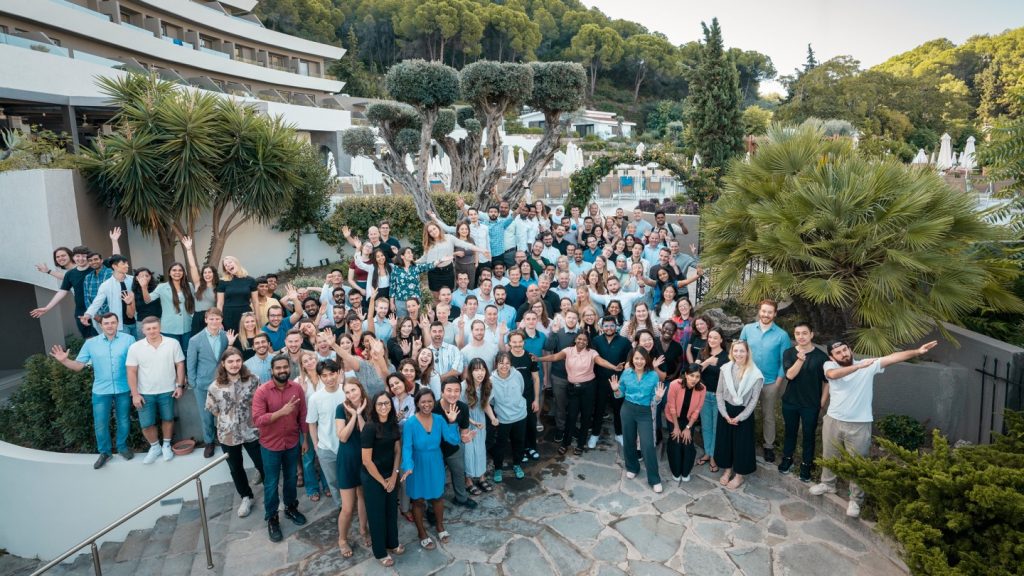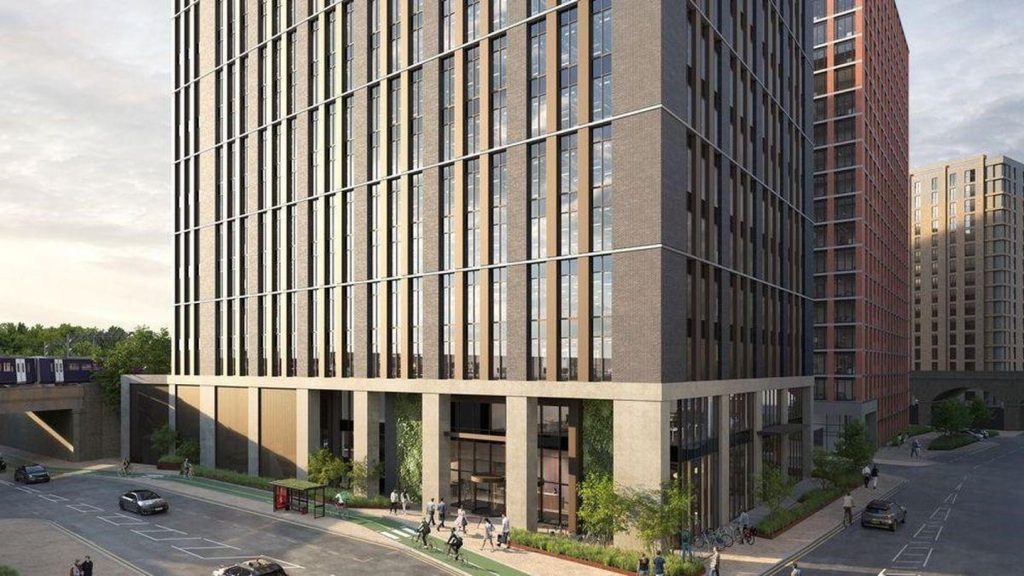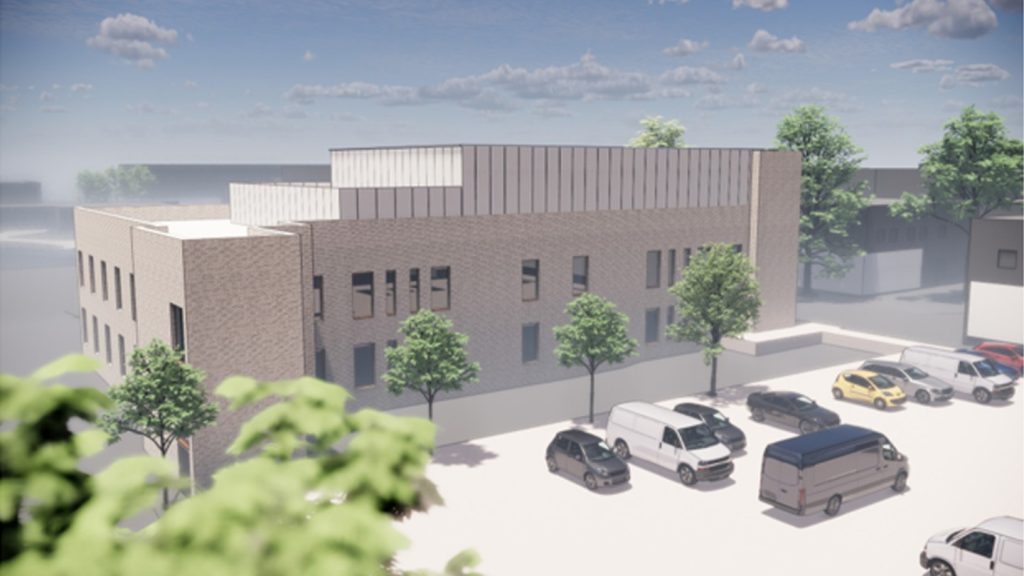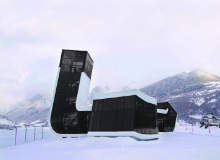
With the Caucasus Mountains standing serenely in the distance, the SOCAR Petroleum station on the outskirts of Gori, eastern Georgia, simultaneously smacks of the impressive and the incongruous.
Angular and twisting, the giant structure resembles an oversized concrete jigsaw piece, while its forecourt is complemented by an adjoining farmers’ market; and cultural space for arts and crafts – not features you would commonly associate with your run-of-the-mill service station.
Then again, most rest stops aren’t designed by internationally renowned architects, let alone commissioned by a head of state – in this case, Berlin-based J Mayer H and Georgian President Mikheil Saakashvili.
Building Georgia
Since his ascension to power in 2004 on the back of the country’s Rose Revolution, Saakashvili has spearheaded Georgia’s most significant building programme in living memory. And to facilitate this, he has recruited the services of some of Europe’s most established architecture firms, including the aforementioned J Mayer H, as well as UNStudio, Henning Larsen and Fuksas.
"We got involved with Georgia about three years ago when it was really beginning to open up to Western European countries," says J Mayer H founder Jürgen Mayer. "As a firm, we also saw it as a very rare opportunity for architecture and design to play a part in infrastructure projects, which isn’t that common in other countries."
See Also:
Subsequently, Georgia now accounts for J Mayer H’s largest concentration of work, with projects ranging from an airport and government building in the northern city of Mestia to a checkpoint in Sarpi on the Turkish border.
How well do you really know your competitors?
Access the most comprehensive Company Profiles on the market, powered by GlobalData. Save hours of research. Gain competitive edge.

Thank you!
Your download email will arrive shortly
Not ready to buy yet? Download a free sample
We are confident about the unique quality of our Company Profiles. However, we want you to make the most beneficial decision for your business, so we offer a free sample that you can download by submitting the below form
By GlobalData"Each of these projects has been quite unique," says Mayer. "The main challenge comes in being able to suitably reflect the area’s particular characteristics. For example, with our work in Mestia we looked at the town’s medieval background, and tried to extract some of these characteristics and translate them into contemporary architecture."
Moving away from Soviet architecture
By Mayer’s own admission, this isn’t straightforward. The majority of projects are completed at breakneck speed – Mestia Airport took only four months to build. And with a portfolio of clients that includes government departments such as the Ministry of Affairs [House of Justice, Mestia] and Ministry of Internal Affairs [Mestia Police Station], the pressure to adhere to deadlines is intense.
"Clients are demanding in terms of time and delivery, but we understand this," says Mayer. "In many ways, it is similar to what happened in Germany after the Second World War, when a lot of stuff had to be built just to give the country a healthy and functioning infrastructure. I see that happening in Georgia right now."
Niko Japaridze, principal architect of local firm Architects of Invention, headquartered in Tbilisi – which completed the Prosecutor’s Office in the capital within eight months – corroborates Mayer’s claim.
"There’s absolutely no time for thinking, which makes it a hard process in many ways," he says. "This also goes for competitions – most of which are private as the government doesn’t have time for prolonged judgements and constructing long briefs. This means that if selected for a project, you need to start building straight away."
This manifest rush is closely tied to Saakashvili’s pro-West foreign policy. Intent on EU and NATO integration, his United National Movement Party has gone above and beyond to disassociate Georgia from its Soviet past. In terms of architecture, this has entailed the expurgation of the hammer-and-sickle brutalism by which urban landscapes became defined in the mid-to-late 20th century.
"We are definitely trying to move away from Soviet architecture," says Japaridze. "This means incorporating features such as large cantilevers and extreme spaces, as well as looking to more traditional forms, which in many ways, have always born more of a resemblance to Western architecture."
Build in haste, repent at leisure?
However, Professor Nick Shavishvili, chair of theory and history of architecture at the Georgian Technical University isn’t so convinced over the latest spate of quick-builds. He holds the belief that, in most cases, Saakashvili’s overzealousness has come at the expense of tasteful and practical design.
"New architecture either doesn’t compare with our national architectural traditions or just mimics them instead," he argues. "In recent years, we have seen the most unimaginable mixture of styles. At times, this has meant low, kitsch culture, which, at the beginning, may appeal to the common public, but in the end, leaves no trace of spatial awareness. It is like one big PR exercise."
Public opinion also appears to be split. While some see new architecture as a source of national pride, others have called into question the justification of multimillion-dollar buildings while the country still contends with high levels of high unemployment; not to mention 1.5 million people registered with state social services as living in poverty.
"I am of the opinion that people would rather see things being built than demolished," says Japaridze. "However, I do understand that people are unsure over where the budget is coming from. Also, with the terrible rush to construct, dialogue with the public could be better."
Such misgivings appear to have done nothing to abate the status quo. As well as the construction of a new glass-domed parliament building in Kutaisi – which MPs will move to in October after the country’s parliamentary elections – plans were announced in December 2011 to build Lazika, an ‘instant city’ on the north-western marshlands off the Black Sea.
However, at the time of writing, knowledge of the project appears scant. A five-minute government promotional video was launched online in January depicting a colourful urban infrastructure of skyscrapers and glitzy hotels – the pretext, according to Saakashvili, is that it will represent a "leading Black Sea trading hub" – but for Shavishvili, Lazika remains a pipedream at best.
"I am not even sure if there is a master plan for Lazika," Japaridze says. "And if there is one, I just can’t see it being sustainable A quick and reckless development will always fail in the quality of both construction and design."
After Saakashvili
Yet, despite qualms over sustainability, he concedes that Saakashvili has generated unprecedented levels of awareness regarding architecture and design – "he is both decisive and remarkably keen on our profession."
But the president’s final term in office is set to expire next year. In the wake of his exit, can Georgia expect to maintain the current rate of construction without its ‘architect-in-chief’ at the helm?
"It’s difficult to say whether the next president will be as adamant when it comes to architecture," says Japaridze. "But as long as there are no radical political exchanges, I believe the trend will probably stabilise. As a country, we also have a lot more experience when it comes to design and using the right materials. I think we can adapt sufficiently and continue in a positive way, albeit slightly slower."
Only time will tell. But for a country that still carries the scars of civil war and political volatility, fresh and imaginative architecture, whether it comes in the shape of a parliamentary office or motorway rest stop, could offer an altogether different legacy that Georgians can be proud of.



